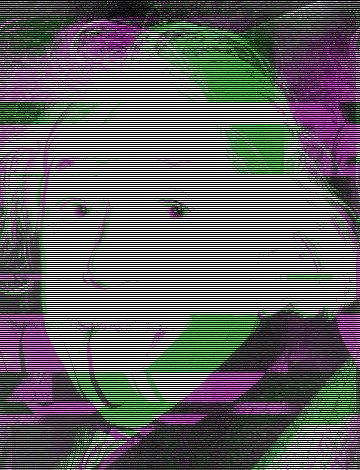Postmodernism
promotes the dematerialism of art, emphasizing the importance of the idea and
concept beyond what the audience can see or touch.[1] It erases the line of
formality and blurred the difference between high and low art, opening up the
possibilities of multiple interpretations based on individual’s perspective. As
the modern society gradually gains more dependence on technology, glitch art inherits
the postmodern concept and application and takes the failure in mechanical
process as a dematerialized form of digital art.
Duchamp’s
Fountain started a great controversy
on the function and standard of art. The
Postmodern tradition often uses readymades and duplication to “reduce the
aesthetic consideration to the choice of the mind, not to the ability or
cleverness of the hand.”[1] In the case of glitch art, computer replaces the
“hands” and creates the opportunity to alter the significance of aesthetic. Fundamentally,
glitches are errors mechanical process or algorithm calculation and normally
the failures are instantly discarded. However, from an artistic standpoint, the
glitches reveal the process happened behind each pixel on screen and
demonstrate the fragility and imperfection of technology.
Glitch
art challenges the computer to perform beyond the normal task, and further utilizes
it as both the tool and medium. The foundation of technology is composed of
both hardware and software, and artists usually modify these components to create
the glitch. In the data-bending process, the codes, which are parts of the
software, are modify and reconfigured into new visual representation. The
process of translating the codes from lines of characters into a new language in
visual form conveying the media itself. On the other hand, the glitches from
hardware failure directly display the physical damages through its inability to
perform. Both methods incorporate technology as the tool to represent of the
mechanism as itself, and the visuals from these artifacts usually have a
certain look due to the similarity in engineering. [2]
By
removing the precision that machines should achieve, British artist Ant Scott
demonstrated the essence of the technology itself without the standard and
expectation of its performance. Because the artist has no control over the
result of erring, the pixels in the final images are the representation of the
computer itself, without any manipulation by man. Scott observed the reaction
of his audience to his work, and had noticed that those who did not know the
source of the images enjoyed the works more than those who did.[3] It was the
perspective from the audience that made the difference between an image of
disjointed, abstract pixels with bright colors and the error message on the
screen representing failure. The message of the work is not embedded in the visual,
but in the audience’s understanding of the source and process that generated the
image. [4]
As
other movements in postmodernism such as video art and pop art, glitch art is expression
of the cultural attitudes and context without a standardized product. By
directly using the error as the message, glitch art experiments with the perceptive
on technology.
1.Margot
Lovejoy, Digital Currents: Art in the Electronic Age(Boston: Prentice
Hall, 2000), 45-52.
2. Dominic McIver Lope, A
Philosophy of Computer Art (London: Routledge, 2010), 3-5,111-113.
3. Iman Moradi, ed., Glitch: Designing Imperfection (New York : Mark Batty Publisher,
2009), 20-21.
4. Rachel Greene, Internet
Art (London: Thames & Hudson, 2004), 194.
Ant Scott. DEATHSTAR #01.
Ant Scott. CHROMA #01.





.jpg)
.jpg)










